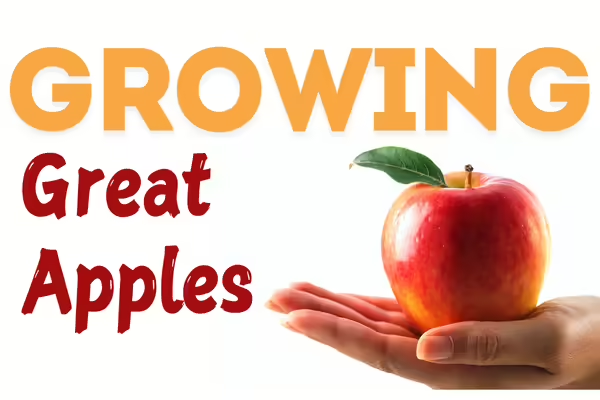
Come celebrate the fall apple season by learning more about this exceptional local fruit. Join University of Illinois Extension's Local Foods and Small Farms Educator, Grant McCarty, for the Growing Great Apples program. In this presentation, you'll learn about general production of apples, new and unique varieties, rootstocks, seasonal issues encountered in 2024, insect challenges, harvesting, and preparing your trees for winter. This program is for those currently growing apples or wanting to add trees for a small orchard as well as those interested in learning more about apple production in Northern Illinois.
"Apple orchards thrive in Northern Illinois. From family-owned, u-pick orchards to trees in the backyard, these fruit trees regularly yield well with a wide range of different varieties,” McCarty states. “While they do well most years, they still can have challenges like biennial fruiting and insects/disease. So management is key for getting great yields”
Growing Great Apples will be held on Thursday, October 10 in two locations at two different times:
Jo Daviess County: 1:30 p.m. at the Jo Daviess County Extension Office, 204 N. Vine Street, Elizabeth, IL
Stephenson County: 6 p.m. at the Freeport Public Library, 100 E. Douglas Street, Freeport, IL
Growing Great Apples will be held on Tuesday, October 15 at:
Winnebago County: 10:00 a.m. at the Cherry Valley Library, 755 E State Street, Cherry Valley, IL
If you need a reasonable accommodation to attend either of these programs, please call the Extension Office number listed above. Early requests are strongly encouraged to allow sufficient time to meet your needs.
University of Illinois Extension develops educational programs, extends knowledge, and builds partnerships to support people, communities, and their environments as part of the state's land-grant institution. Extension serves as the leading public outreach effort for University of Illinois Urbana-Champaign and the College of Agricultural, Consumer and Environmental Sciences in all 102 Illinois counties through a network of 27 multi-county units and over 700 staff statewide. Extension’s mission is responsive to eight strategic priorities — community, economy, environment, food and agriculture, health, partnerships, technology and discovery, and workforce excellence — that are served through six program areas — 4-H youth development, agriculture and agribusiness, community and economic development, family and consumer science, integrated health disparities, and natural resources, environment, and energy.